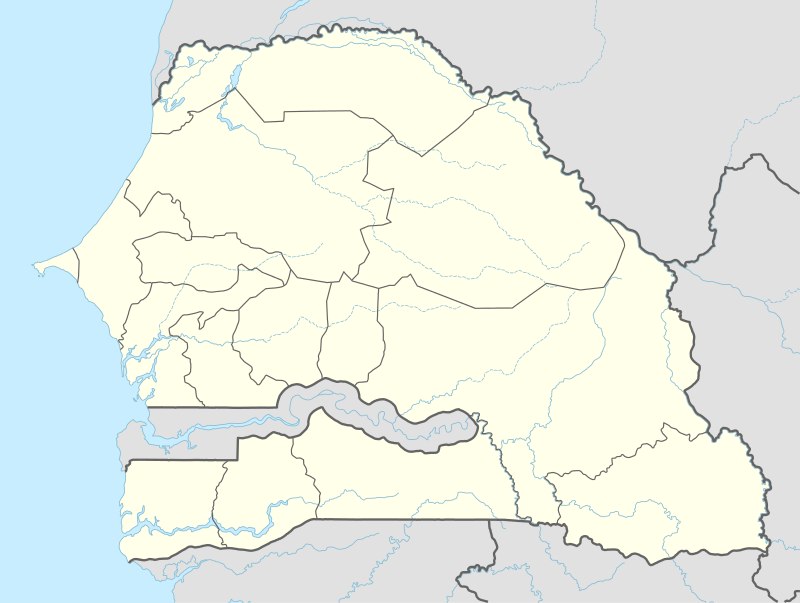Thionck Essyl
| Thionck Essyl Tionk Essil | |
|---|---|
| Town | |
 Thionck Essyl | |
| Coordinates: SN 12°47′8″N 16°31′18″W / 12.78556°N 16.52167°WCoordinates: SN 12°47′8″N 16°31′18″W / 12.78556°N 16.52167°W | |
| Country | Senegal |
| Region | Ziguinchor |
| Department | Bignona |
| Government | |
| Elevation | 16 m (52 ft) |
| Population (2007) | |
| • Total | 8,507 |
Thionck Essyl (also called Tionk Essil) is a town in Ziguinchor, Senegal, located 65 km north-west of the region capital.
Etymology
The name of the town means "cook remaining crouched."[1]
History
The origins of the town are connected to the kingdom of Mof-Ewi, when it was populated by defectors from Guinea-Bissau.[1] Long considered the largest village in Senegal,[2] the village was urbanized in 1990.
Administration
Thionck Essyl is part of the arrondissement of Tendouck in Bignona, Ziguinchor.
Geography
The nearest towns are Hilol, Mantat, Etouta, Mlomp, Tendouck, and Djimande.
Population
The population is primarily Jola. Some sources[1][3] suggest that more than 10000 people live in Thionck Essyl, however the census of 2002 stated that the town's population was only 8006 living in 1021 households.[4] According to official estimates, the population was supposed to reach 8507 by the end of 2007.[5] According to PEPAM (Water and Sanitation Program for the Millennium), however, there are currently 6954 people and 968 households in Thionck Essyl.[6]
Economy
The borders of the town do not lend themselves to easy growth. The town hospital is not very functional because it lacks qualified staff. There is a high school in the town.
See also
Bibliography
- Annie Cheneau-Loquay (1979). Thionck-Essyl en Basse Casamance. Évolution récente de la gestion des ressources renouvelables (in French). Université de Bordeaux III. p. 336.
- Michel Sagna (2003). Alphabétisation, lutte contre la pauvreté et développement effets du programme Caravane de l'alphabétisation au Sénégal sur les populations et le milieu rural sénégalais : cas des localités de Thionck Essyl et Pare Cissé (in French). Ottawa: National Library of Canada/Bibliothèque nationale du Canada. ISBN 0-612-72603-7.
- Mathilde Krul (1989). Projekten en leiders in Thionck-Essyl, Senegal (in Dutch). Vrije Universiteit.
References
- 1 2 3 "Les descendants du royaume de Mof-Ewi". Petit futé Sénégal: 221. 2007–2008.
- ↑ Monique Bertrand; Alain Dubresson (1997). Petites et moyennes villes d'Afrique noire. Karthala. p. 120. ISBN 2-86537-743-1.
- ↑ "Les Amis de Thionck-Essyl".
- ↑ Ministère de l'Économie et des Finances (January 2004). Projections de population du Sénégal issues du recensement de 2002 (PDF). Direction de la Prévision et de la Statistique. p. 22.
- ↑ Ministère de l'Économie et des Finances (January 2006). Estimation de la population du Sénégal de 2005 à 2015. Direction de la Prévision et de la Statistique. p. 19.
- ↑ "PEPAM".
External links
- (French) Thionck Essyl on the PEPAM website
- (French) Les Amis de Thionck Essyl